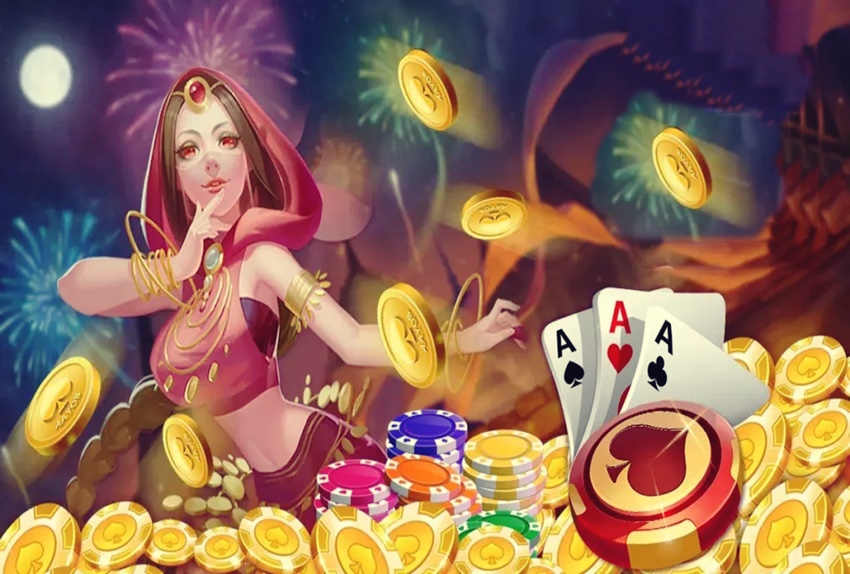Introduction

Teen Patti Mumbai, a card game deeply embedded in the cultural fabric of India, especially in urban centers like Mumbai, represents more than just a pastime activity. It symbolizes the fusion of tradition and modernity, community bonding, and the spirit of competition. In this exploration, we delve into the origins, significance, and contemporary presence of Teen Patti in the bustling city of Mumbai, showcasing its integral role in the broader landscape of Teen Patti India.
Origins and Evolution
Teen Patti, also known as Indian Poker, traces its roots back to ancient India, where it was played as a means of entertainment and social interaction. Over the centuries, the game evolved, incorporating elements of strategy, psychology, and chance. Mumbai, formerly known as Bombay, served as a melting pot of cultures, where diverse communities brought their unique variations of Teen Patti, enriching its tradition.
Cultural Significance
In Mumbai, Teen Patti transcends its role as a mere card game; it serves as a cultural phenomenon that cuts across socio-economic boundaries. Whether played in lavish penthouses or humble street corners, Teen Patti fosters a sense of camaraderie among players, regardless of their backgrounds. It provides a platform for storytelling, laughter, and bonding, strengthening social ties within communities.
Social Dynamics
The game’s popularity in Mumbai reflects the city’s dynamic social landscape. From college campuses to corporate offices, Teen Patti serves as a common ground where individuals from different walks of life come together to unwind and connect. The egalitarian nature of the game, where luck often trumps privilege, fosters a sense of inclusivity and mutual respect.
Symbol of Urban Identity
Mumbai, often dubbed the “City of Dreams,” is renowned for its resilience, diversity, and hustle. Teen Patti embodies these qualities, reflecting the city’s relentless spirit and the willingness to take calculated risks in pursuit of success. Whether played in the bustling streets of Colaba or the posh clubs of Bandra, Teen Patti encapsulates the essence of Mumbai’s urban identity.
Rituals and Traditions
In Mumbai, Teen Patti is not just a game but a ritualistic affair, complete with its own set of customs and traditions. From the meticulous shuffling of cards to the exchange of playful banter, every aspect of the game is steeped in tradition. Special occasions like festivals, weddings, and family gatherings often feature marathon Teen Patti sessions, adding a festive charm to the proceedings.
Economic Implications
Beyond its cultural significance, Teen Patti also has economic implications in Mumbai. The game fuels a thriving underground economy, where players wager large sums of money in high-stakes games. While officially banned in many places, Teen Patti continues to thrive in clandestine circles, attracting players seeking both fortune and adrenaline.
Pop Culture Influence
Mumbai’s vibrant entertainment industry has also contributed to the popularization of Teen Patti. From Bollywood films to web series, Teen Patti often features prominently as a plot device, adding drama and intrigue to the narrative. Iconic scenes of characters huddled around a table, engaged in intense gameplay, have become emblematic of Mumbai’s pop culture landscape.
Modern Adaptations
In recent years, Teen Patti has undergone a digital revolution, with online platforms offering virtual versions of the game. This technological shift has made Teen Patti more accessible to a wider audience, transcending geographical barriers. However, purists argue that the charm of Teen Patti lies in its physicality – the tactile sensation of holding cards and reading opponents’ expressions.
Challenges and Controversies
Despite its popularity, Teen Patti faces scrutiny from authorities due to its association with gambling and organized crime. The game’s underground nature makes it difficult to regulate, leading to concerns about exploitation and addiction, especially among vulnerable communities. Balancing the cultural heritage of Teen Patti with the need for responsible gaming practices remains a challenge for policymakers.
Conclusion
Teen Patti Mumbai stands as a testament to the resilience, diversity, and cultural vibrancy of India’s urban landscape. Beyond its status as a card game, Teen Patti embodies the spirit of community, tradition, and innovation. In the ever-changing metropolis of Mumbai, Teen Patti continues to thrive, serving as a timeless reminder of the city’s rich heritage and enduring spirit.
FAQ
What exactly is Teen Patti?
- Teen Patti, also known as Indian Poker, is a popular card game in India that originated centuries ago. It involves betting and strategy, with players aiming to have the best combination of cards or bluffing their opponents into folding.
How does Teen Patti reflect Mumbai’s culture?
- Teen Patti is deeply ingrained in Mumbai’s culture, serving as a means of social interaction and community bonding. It transcends socio-economic boundaries, bringing together people from diverse backgrounds to share stories, laughter, and camaraderie.
Why is Teen Patti so popular in Mumbai?
- Teen Patti’s popularity in Mumbai can be attributed to its rich cultural heritage, its role as a social equalizer, and its portrayal in popular culture, including Bollywood films and web series. Additionally, the game’s adaptability to various settings, from lavish penthouses to humble street corners, contributes to its widespread appeal.
What are the economic implications of Teen Patti in Mumbai?
- While Teen Patti is primarily a recreational activity, it also fuels an underground economy in Mumbai, with high-stakes games attracting players seeking both entertainment and financial gain. However, the game’s association with gambling has led to regulatory challenges and controversies regarding its legality and social impact.
How has technology influenced the game of Teen Patti?
- In recent years, Teen Patti has undergone a digital transformation, with online platforms offering virtual versions of the game. This technological shift has made Teen Patti more accessible to a wider audience, although traditionalists argue that the tactile experience of playing with physical cards remains integral to the game’s charm.